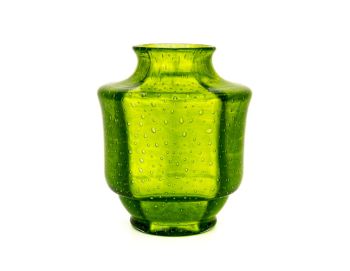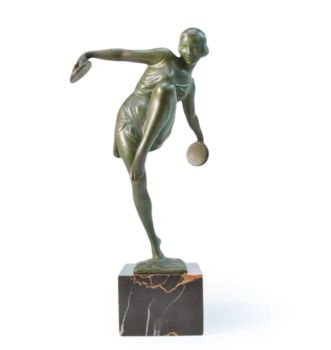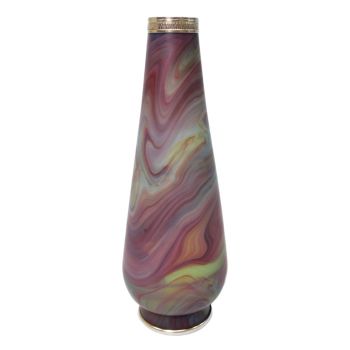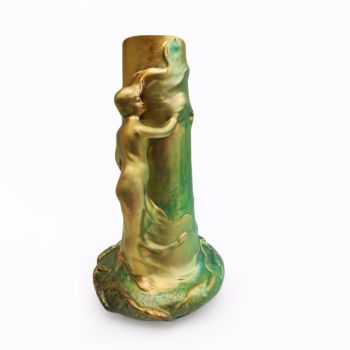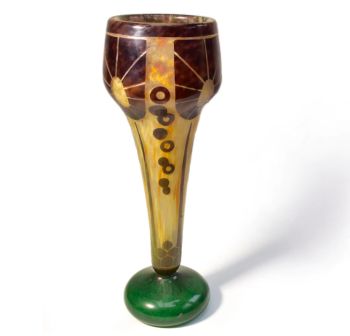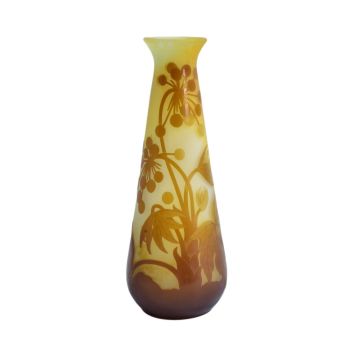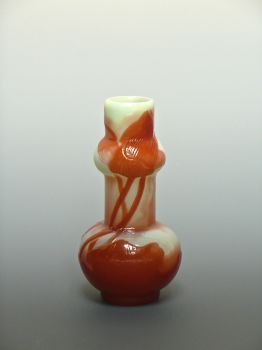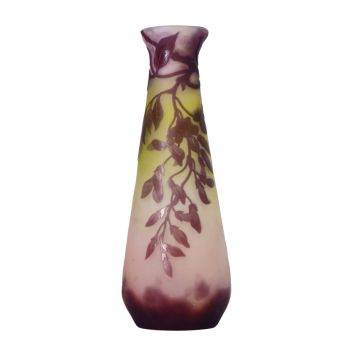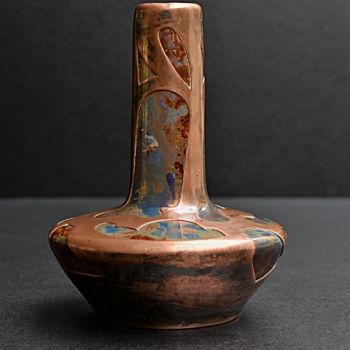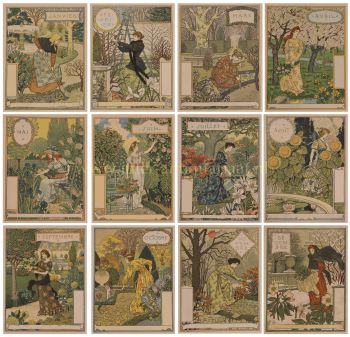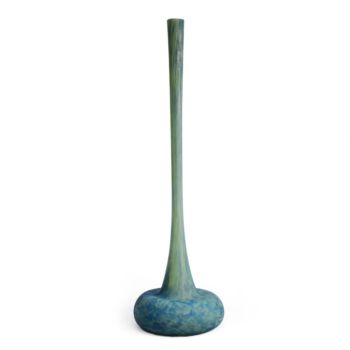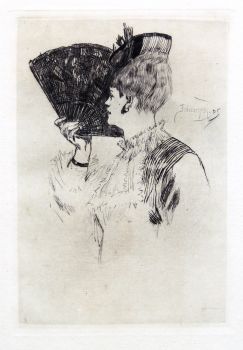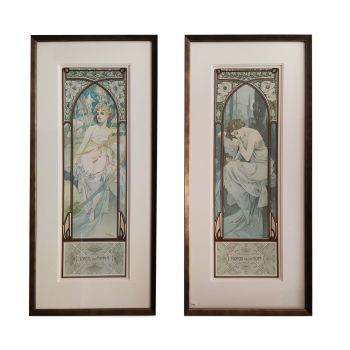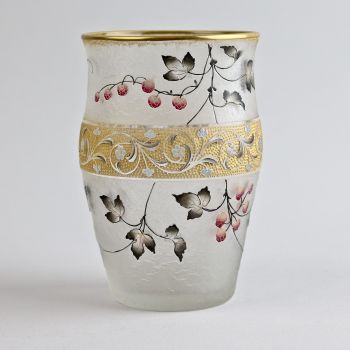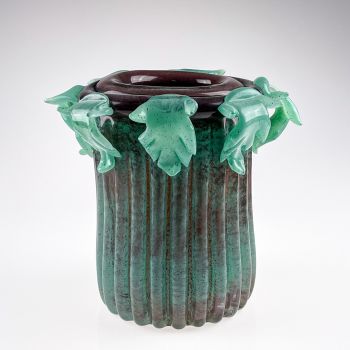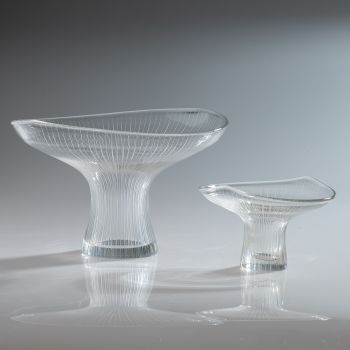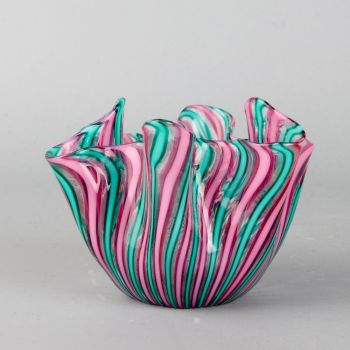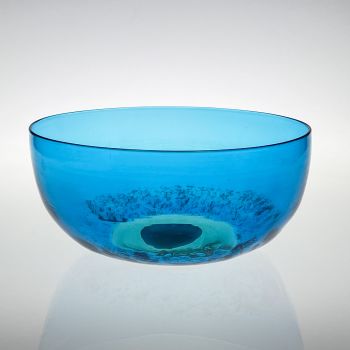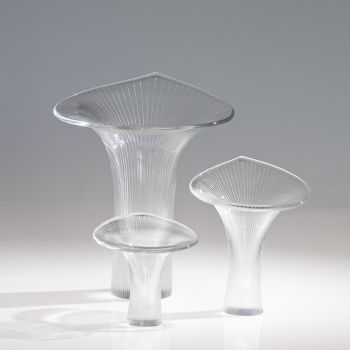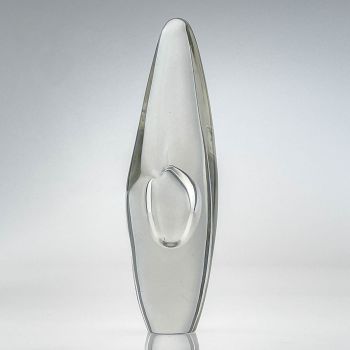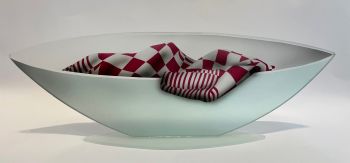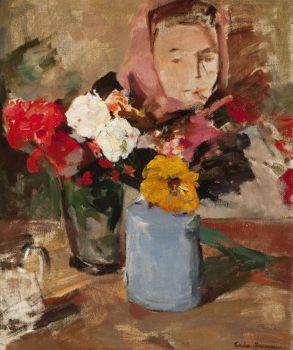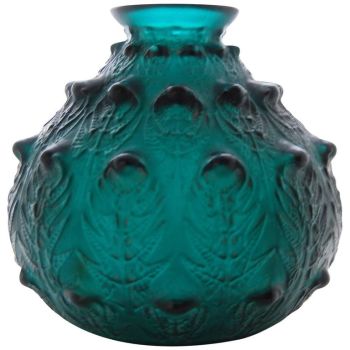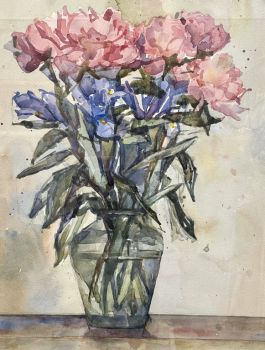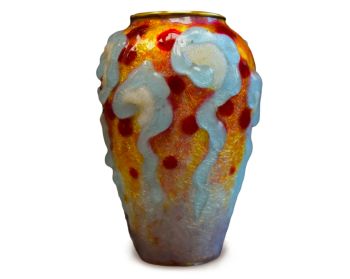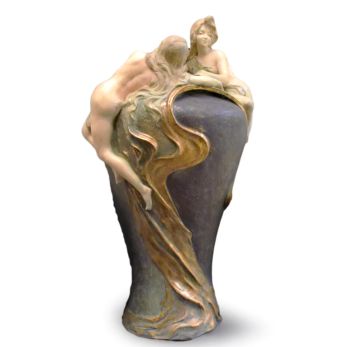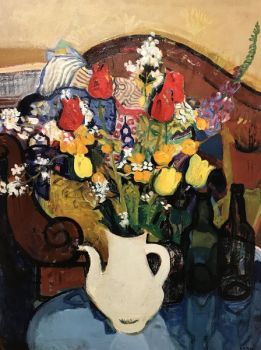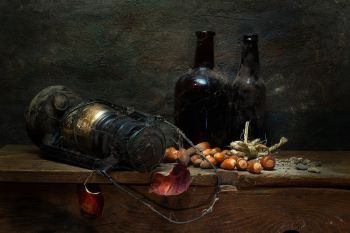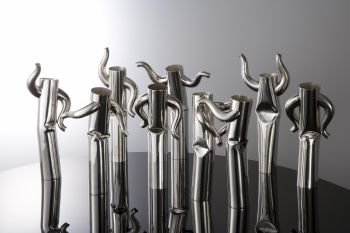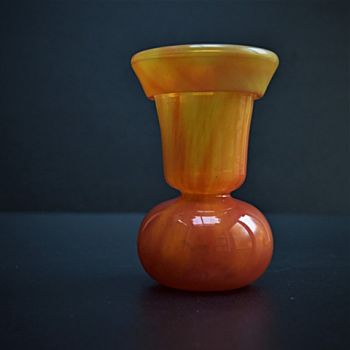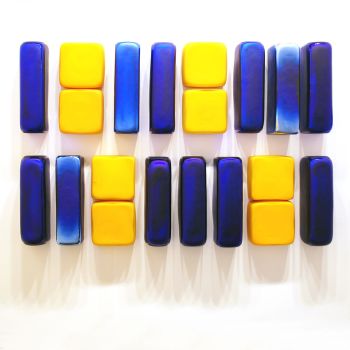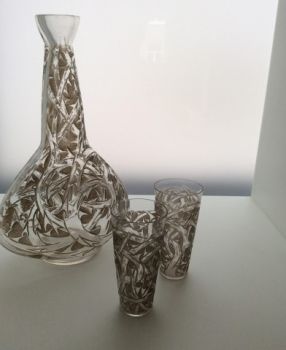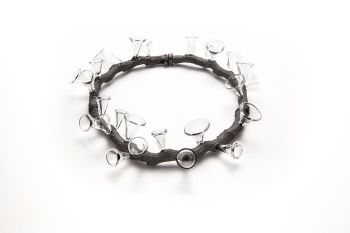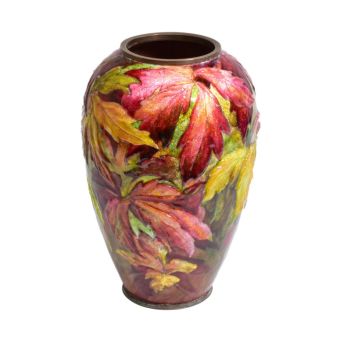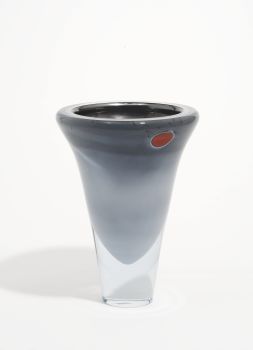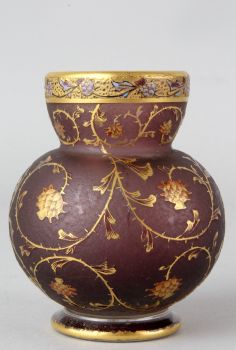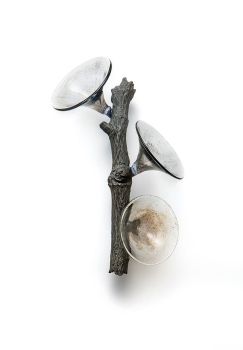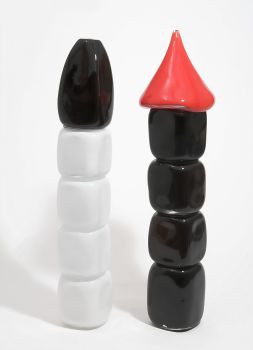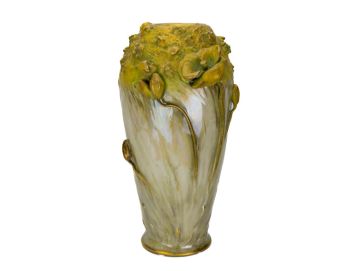Johann Loetz Witwe - Flamarion Titania bowl – Franz Hofstätter 1900 - 1910
Johann Loetz (Lötz) Witwe Klostermühle
Glas
8 cm, ø 10 cm
ConditionNear mint
Preis auf Anfrage
Antiques Emporium
- Über KunstwerkManufacturer: Johann Loetz Witwe
Decor: Flamarion
Style: Jugendstil
Material: Molded and free-formed glass, reduced, improved pontil
Color: Titania – blue with green flames
Period: 1900 – 1909
Description:
Franz Hofstätter’s work for Johann Loetz Witwe after 1900 is not entirely clear to this day. It occurs sporadically that a designer mentions his name on a design making attributions very difficult to trace. The reason of this could be that the produced glass was not immediately considered as very important art glass and therefor it was not needed to describe everything very detailed.
Our beautiful bowl is of the decor Flamarion and is a variation of the highly successful Titania genre that had been in production since 1905. Flamarion made its appearance in the year 1907 and can be attributed to the designer Franz Hofstätter. This attribution is substantiated by his name entry in the invoice book in the period 1908 – 1911 for the delivery of objects for the Exhibition “Österreichischer Kunstgewerbe” in Vienna 1911 / 1912.
The bowl is blown in light blue glass with silver titania glass threads in a crackle pattern with a decoration of drawn vertical green strips with silver titania threads in a flame pattern.
Literature:
Prestel – Böhmisch Glas 1880 – 1940 Band 1 Werkmonographie. Page 243.
Hatje Cantz – Lötz, Böhmisch Glas 1880 bis 1940. Page 88. - Über Künstler
Etwas mehr als hundert Jahre existierte die Glashütte Lötz in Klostermühle, Österreich, ab 1840. Ihre Blütezeit erlebte sie jedoch zu Lebzeiten von Max Ritter von Spaun, dem Enkel des ursprünglichen Gründers Johann Lötz.
Von Spaun übernahm 1879 das Unternehmen und führte es bis 1908, ein Jahr vor seinem Tod. Er wurde von seinem technischen Spezialisten Eduard Prochaska unterstützt, und gemeinsam erfanden, entwarfen und produzierten sie eine ganze Reihe wunderbarer neuer Glasarten, erwarben mehrere Patente und gewannen Preise auf allen großen Weltausstellungen in den 1890er Jahren und in den ersten Jahren des 19. das neue Jahrhundert.
Die Firma Loetz gehörte zu den Vorreitern im Jugendstildesign und insbesondere im Bereich des schillernden Kunstglases. "Papillon"-Glas, wie die Vase links, wird heute manchmal als "Ölfleck"-Glas bezeichnet. Eine weitere beliebte Farbe von Loetz war bestrahltes Glas mit gezogenen Spuren, das als "Phenomenon" -Glas bezeichnet wird.
Es gab irritierte Vasen mit Bändern in Metallic-Farben, die sich über die Oberfläche schlängelten, und viele spektakuläre Designs mit applizierten Pfaden in schönen Farben oder einfach aus dem Glaskörper herausgezogen, um Griffe oder Dekorationen zu bilden.
Um 1900 begann das Unternehmen mit externen Designern zusammenzuarbeiten, und einige große Künstler entwarfen Stücke für Lotz, insbesondere Joseph Hofmann, Koloman Moser, Maria Kirchner und Hofstatter.
1908 wurde Loetz von Max von Spauns Sohn, auch Max genannt, übernommen, und obwohl es finanziell zu kämpfen hatte (Konkurs 1911 und erneut 1931), gab es mehrere große Designer, deren Arbeiten in diesen Jahren und durch die Kunst von Loetz produziert wurden Deko-Zeit. Dazu gehörten Adolf Beckert und Michael Powolny.
Sind Sie daran interessiert, dieses Kunstwerk zu kaufen?
Artwork details
Related artworks
Johann Loetz (Lötz) Witwe Klostermühle
Johann Loetz Witwe - Phänomen Genre 7773 – Orange1900 - 1910
Preis auf AnfrageAntiques Emporium
Johann Loetz (Lötz) Witwe Klostermühle
Johann Loetz Witwe – Jugendstil Cobalt Papillon vaas1900 - 1910
Preis auf AnfrageAntiques Emporium
1 - 4 / 7- 1 - 4 / 24
- 1 - 4 / 24
René Lalique
Eine sehr seltene tiefgrüne Fougeres-Vase, entworfen von R. Lalique1912
€ 8.950Lennart Booij Fine Art and Rare Items
 Kuratiert von
Kuratiert vonSilla Scheepens
Herman Bogman jr.
Flower still life of a nasturtium in a blue vase1950 - 1965
Preis auf AnfrageAdelwein Kunst
1 - 4 / 24Gabriel Argy-Rousseau
Gabriël Argy-Rousseau – Crabes et Algues vase – 19201920 - 1929
Preis auf AnfrageAntiques Emporium
Rene Rietmeyer
"Venezia and Murano September 2007"2007
Preis auf AnfrageEuropean Cultural Centre Collection
Unbekannter Künstler
Cristallo façon de Venise Trinkglas1600 - 1650
Preis auf AnfragePeter Korf de Gidts - Antiquairs
Amalric Walter
Amalric Walter & Henri Bergé – Crabe plumier1920 - 1929
Preis auf AnfrageAntiques Emporium
1 - 4 / 24Johann Loetz (Lötz) Witwe Klostermühle
Johann Loetz Witwe - Phänomen Genre 7773 – Orange1900 - 1910
Preis auf AnfrageAntiques Emporium
Amalric Walter
Amalric Walter & Henri Bergé – Crabe plumier1920 - 1929
Preis auf AnfrageAntiques Emporium
1 - 4 / 12















